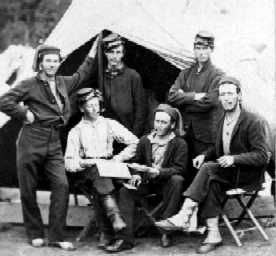Today LaFayette Church (1816-1907), an appropriately-named American Baptist minister, is commissioned as a chaplain of Company D, 26th Michigan Infantry regiment.
Born in Wayne County, New York, Church moved to Rhode Island as a teenager before settling in Michigan in 1836. There he married Sophronia Benjamin (1823-1911) in 1840. Together they have ten children, seven of which survive childhood. The enterprising Church acquired a large farm, helped establish the town of Ithaca, and from 1857 to 1863 operated a grist and saw mill. Active in the Republican Party, Church in 1856 was elected as Gratiot County’s first treasurer, then was re-elected in 1858. He also was elected as the first treasurer for the Arcada Township.
In addition, and despite a lack of formal education, Church was ordained by the Alma Baptist Church (Michigan), where he was installed as pastor in 1862. Previously, Church had helped organize the first Sunday school in Gratiot County.
Church’s call to the pastorate comes shortly before he organizes a company with the 26th Michigan Infantry, on July 19, 1862, of which he was commissioned as Captain. During his war-time service, which ends on June 4, 1865, he infrequently fills the pulpit of Alma Baptist.
Lafayette is the second in his family to join the 26th Michigan. His son, Nathan (1840-1926), enlisted August 12, 1861 as a Sergeant in Company C, 8th Michigan Infantry, later joining Company D, Michigan 26th, his father’s unit. On April 15, 1864 he is commissioned as Captain of Company I.
Father and son both survive the war and return to civilian life in Gratiot County, Michigan. Lafayette resumes pastoring, business enterprises and civil service. Nathan follows in the footsteps of his father both in his involvement in business enterprises and Republican politics.
Sources: “Church Family Collection,” Clark Historical Library, Central Michigan University (link); image, Bentley Historical Library, University of Michigan (link)



